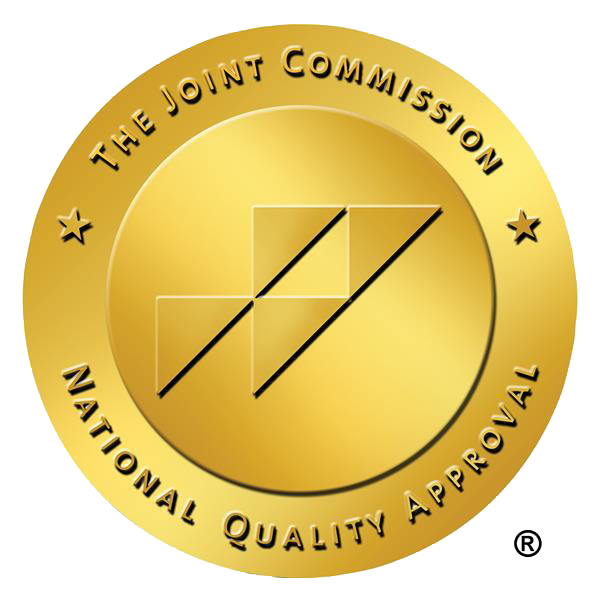Identifying Major Depressive Disorder in Different Age Groups
Symptoms of MDD can interfere significantly with everyday responsibilities such as work, school, social activities, and maintaining relationships. However, how MDD presents can vary greatly depending on the age of the individual. From children and adolescents to older adults, each age group experiences unique symptoms and challenges.
For instance, in children, MDD can present as sadness, clinginess, and unexplained physical complaints like stomach aches or headaches. Adolescents with MDD may exhibit extreme sensitivity to rejection or failure, with mood disturbances that are more intense than typical hormonal effects.
In contrast, older adults may experience symptoms such as memory issues or physical pain, and MDD can sometimes be challenging to distinguish from other age-related issues like dementia. Recognizing these age-specific symptoms is vital in the early detection and effective treatment of MDD.
Children and Adolescents
When we think of MDD, we often picture adults battling this condition. However, children and adolescents are not immune. In fact, they often present with irritability, moodiness, or aggression, differing from symptoms commonly seen in adults. Recognizing these signs can be particularly challenging as they can be mistaken for typical adolescent behavior.
Further complicating the picture, young individuals may exhibit symptoms such as increased appetite and hypersomnia. In children, depression can manifest through somatic complaints or hypochondriasis. Adolescents suffering from MDD can experience significant declines in academic performance and withdrawal from social interactions.
A variety of biological, psychological, and environmental factors contribute to the risk of developing depression in the younger population, demonstrating the need for focused intervention strategies. Recognizing the signs of depression unique to children and adolescents is crucial for timely intervention, which can mitigate risks and improve outcomes.
Older Adults
Depression is not considered a normal part of aging, contrary to common misconceptions. In older adults, depression may manifest with more pronounced somatic symptoms, resembling medical or organic diseases, or as a form of the disorder characterized by apathy and pronounced ‘loss of interest’, known as ‘depression without sadness’.
Symptoms of ‘depression-executive dysfunction syndrome’, affecting frontal-subcortical cognitive pathways, may also be present in older adults with MDD. Moreover, depression in older adults can increase the risk and worsen the prognosis of chronic conditions such as:
- diabetes
- cancer
- cardiovascular diseases
- dementia
It is crucial to not take depression in older adults lightly due to its tendency to go undiagnosed and untreated, often presenting with different or less obvious symptoms than those observed in younger individuals. The importance of recognizing and addressing MDD in older adults cannot be overstated.
Treatment Options for Major Depressive Disorder
Treating MDD is not a one-size-fits-all approach. The treatment options available are as multifaceted as the disorder itself. Combining pharmacological treatments with cognitive-behavioral therapy can be effective in treating comorbid conditions like anxiety and depression.
It’s important to remember that treatment should be tailored to the individual, considering their unique symptoms, circumstances, and needs. The three main areas of treatment include medication, therapy, and lifestyle modifications. Let’s delve deeper into these areas.
Remember, seeking treatment is not a sign of weakness, but a step towards reclaiming your life from MDD. The journey may be challenging, but with the right support and treatment, it is possible to manage MDD effectively.
Medication
Medication plays a significant role in treating MDD, with selective serotonin reuptake inhibitors typically being the first choice in pharmacological treatment. These medications work by increasing the levels of serotonin, a neurotransmitter associated with mood regulation, in the brain.
Other than selective serotonin reuptake inhibitors, serotonin-norepinephrine reuptake inhibitors and atypical antidepressants can also be prescribed for treating MDD, sometimes in conjunction with other treatments for treatment resistant depression. Each type of medication works differently and is chosen based on the individual’s symptoms, side effect profiles, and potential for overdose.
It’s important to remember that while these medications can alleviate the symptoms of MDD, they are not a cure. They are most effective when used in combination with other treatment approaches like therapy and lifestyle modifications.
Therapy
While medication addresses the biological aspects of MDD, therapy targets the psychological facets. Various psychotherapy approaches are instrumental in treating MDD. These approaches provide individuals with the tools to manage their depressive symptoms, improve their quality of life, and prevent relapse.
Cognitive-behavioral therapy (CBT) is a commonly used approach in treating MDD. It helps individuals identify and change thought and behavior patterns that lead to depressive symptoms, thereby reducing the severity and frequency of these symptoms. In contrast to electroconvulsive therapy, which is another treatment option, CBT focuses on addressing the cognitive aspects of depression.
Another effective psychotherapy approach is interpersonal therapy (IPT), which focuses on improving interpersonal relationships and social functioning to reduce depressive symptoms.
It’s important to remember that therapy is a personal journey and what works for one person may not work for another. Hence, finding a therapy approach that resonates with you is crucial.
Lifestyle Modifications
Beyond medication and therapy, lifestyle modifications play a significant role in managing MDD symptoms. These modifications are within an individual’s control and can greatly enhance the effectiveness of other treatment strategies.
These changes include:
- Regular physical activity: Exercise releases endorphins, the body’s natural mood boosters, and can help alleviate depressive symptoms.
- A balanced diet: Ensuring the body gets the necessary nutrients to function optimally, which can enhance overall wellbeing and mood.
- Good sleep hygiene: Can help regulate mood and increase energy levels, reducing the fatigue often associated with MDD.
Adopting these lifestyle changes can be challenging, especially when battling MDD. However, small, gradual changes can make a significant difference in managing symptoms and improving quality of life. Remember, every step, no matter how small, is a step towards better mental health.
Comorbidities and Complications
MDD often doesn’t exist in isolation. It’s not uncommon for it to be accompanied by other emotional, behavioral, and health problems. These comorbidities and complications can exacerbate the challenges faced by those living with MDD, making treatment more complex. These complications can range from other mental health conditions like anxiety disorders and substance abuse to severe health problems. They can also increase the risk of suicidal ideation and attempts.
Understanding these comorbidities and complications is crucial in devising a comprehensive treatment plan for MDD. Let’s delve deeper into some of the common comorbidities and complications associated with MDD – anxiety disorders, substance abuse, and suicidal ideation and attempts.
Anxiety Disorders
Anxiety disorders are the most common mental health disorders to co-occur with MDD, with around 60% of people with either condition showing symptoms of the other. This highlights the complex relationship between these two conditions, with overlapping symptoms and shared genetic factors.
In fact, the DSM-5 includes an ‘anxious distress’ specifier to classify MDD patients who also exhibit anxiety symptoms, with 50-75% of individuals with MDD qualifying for this specifier. Such individuals face considerable challenges in diagnosis due to symptom overlap and experience worse psychosocial functioning and lower quality of life than those suffering from MDD alone.
Genetic changes can make an individual more susceptible to both depression and certain anxiety disorders, often leading to more severe and persistent symptoms, as seen with the high rates of MDD in those with post-traumatic stress disorder. This underscores the importance of recognizing the co-occurrence of these conditions and addressing them in treatment plans.
Substance Abuse
Substance abuse is another common comorbidity in individuals with MDD. Individuals with MDD are at an increased risk for substance use disorders. About one-third of individuals with MDD also struggle with substance use disorder, which increases the risk of suicide and exacerbates social and personal difficulties.
Substance abuse can complicate the treatment of MDD, making it more challenging to manage symptoms and improve quality of life. It can also exacerbate the depressive symptoms, creating a vicious cycle that can be difficult to break.
Addressing both MDD and substance abuse is crucial for effective treatment. This requires a comprehensive approach that addresses both conditions simultaneously, ensuring that the individual receives the support they need to overcome these challenges.
Suicidal Ideation and Attempts
One of the most severe complications of MDD is the significantly higher risk of suicidal ideation and attempts. Individuals with MDD are more likely to experience suicidal thoughts and attempts compared to non-MDD controls. A variety of suicidal behaviors are present in MDD, including suicidal ideation, planning, and attempts, with a higher likelihood noted in those with the ‘anxious distress’ specifier. Profound feelings of hopelessness and worthlessness, alongside psychosocial factors like relationship issues, can intensify the risk of suicidality.
Recognizing and addressing these signs is crucial in managing MDD. It’s important to remember that help is available, and it’s never too late to reach out. If you or someone you know is struggling with suicidal thoughts, reach out to a mental health professional immediately.
Preventive Measures and Early Diagnosis
While treating MDD is crucial, prevention and early diagnosis are equally important. Approximately one in six people will experience a major depressive episode at some point in their lifetime. With up to 16 million adults each year suffering from clinical depression in the United States alone, the importance of prevention and early intervention cannot be overstated.
Major depressive episodes often occur multiple times throughout a person’s life and can vary in severity, underscoring the importance of prevention and early intervention. While there is no sure way to prevent depression entirely, there are strategies that may assist in reducing the risk or lessening the severity of symptoms.
Adopting self-care strategies and seeking early treatment can help individuals mitigate depressive symptoms or prevent them from worsening. These preventative measures, coupled with strategies for early diagnosis, such as mental health screening and building resilience, can have a significant impact on the management of MDD.
Mental Health Screening
Mental health screenings play a crucial role in the early detection of MDD and help to diagnose depression. Healthcare professionals use structured depression screening tools such as the Patient Health Questionnaire (PHQ), Beck Depression Inventory (BDI), and the Center for Epidemiologic Studies Depression Scale (CES-D) to evaluate symptoms of MDD.
For adolescents aged 12 and older, annual screening using validated tools like the PHQ-9 for Teens is recommended. Assessing risk factors such as family and personal psychiatric history is crucial for detecting depression. Routine screening for suicidality is also vital for the management of MDD to provide timely treatment for individuals experiencing suicidal thoughts or behaviors.
Early detection of MDD through mental health screenings can help prevent symptoms from worsening. Remember, it’s never too early to seek help. If you or someone you know is struggling with symptoms of MDD, reach out to a healthcare professional for a mental health screening.
Building Resilience
Building resilience is another effective strategy for preventing the onset of MDD. Strengthening resilience may prevent the onset of depression, as there is a negative correlation between resilience and depression scores.
The Resilience Scale is a validated tool that measures individual strengths potentially preventive for depression. Strategies for increasing resilience include:
- Nurturing a sense of purpose
- Maintaining a balanced outlook
- Persevering through challenges
- Developing self-reliance
- Fostering self-acceptance
Healthy lifestyle habits, such as a nutritious diet, regular exercise, and improved sleep hygiene, also contribute to building resilience against major depressive disorder. Remember, building resilience is a journey, not a destination. Every step, no matter how small, is a step towards better mental health.
Major Depressive Disorder is a complex condition that impacts millions worldwide. From understanding its definition and key features to exploring its causes, symptoms, and treatment options, we’ve taken a comprehensive look at this prevalent mental health condition. Remember, understanding MDD is the first step towards managing it effectively.
The journey with MDD can be challenging, but you are not alone. There are various treatment options available and numerous resources to help you along the way. Remember, it’s okay to ask for help. With the right support, understanding, and intervention, it is possible to manage MDD effectively and lead a fulfilling life.
Frequently Asked Questions
Is major depression a chronic illness?
Yes, major depression is considered a chronic illness because it can cause persistent feelings of sadness, apathy, and hopelessness, along with physical symptoms like fatigue and appetite changes.
What is Major Depressive Disorder?
Major Depressive Disorder (MDD) is a mood disorder that involves persistent sadness and a lack of interest in activities, significantly impacting everyday life. It differs from general feelings of sadness and can have various emotional, physical, behavioral, and cognitive symptoms.
What are the causes of MDD?
MDD is caused by a variety of factors, including genetic predispositions, family history, neurotransmitter imbalances, environmental stressors, and psychological strain. Understanding these factors can help in managing the condition effectively.
How can MDD be treated?
MDD can be effectively treated through a combination of medication, therapy, and lifestyle adjustments, tailored to the individual’s unique symptoms and circumstances. It’s important to consult with a healthcare professional to create a personalized treatment plan.
What are some preventive measures for MDD?
To prevent MDD, consider mental health screenings, building resilience, adopting self-care practices, regular physical activity, a balanced diet, and good sleep hygiene. These measures can help reduce the risk of MDD.







